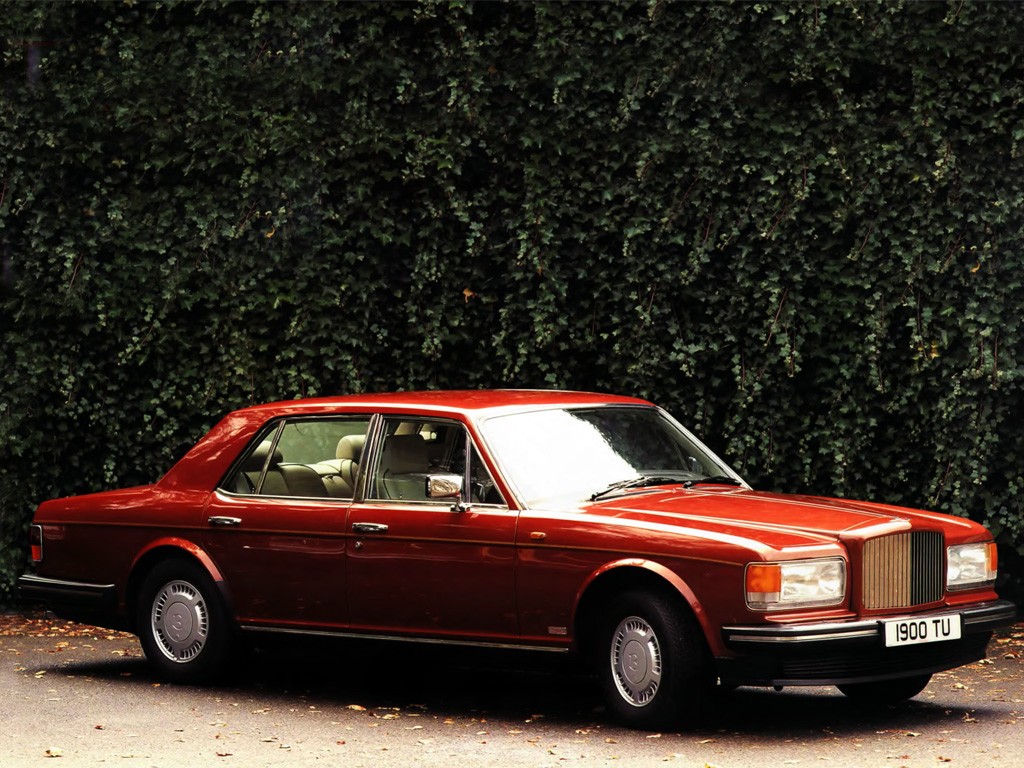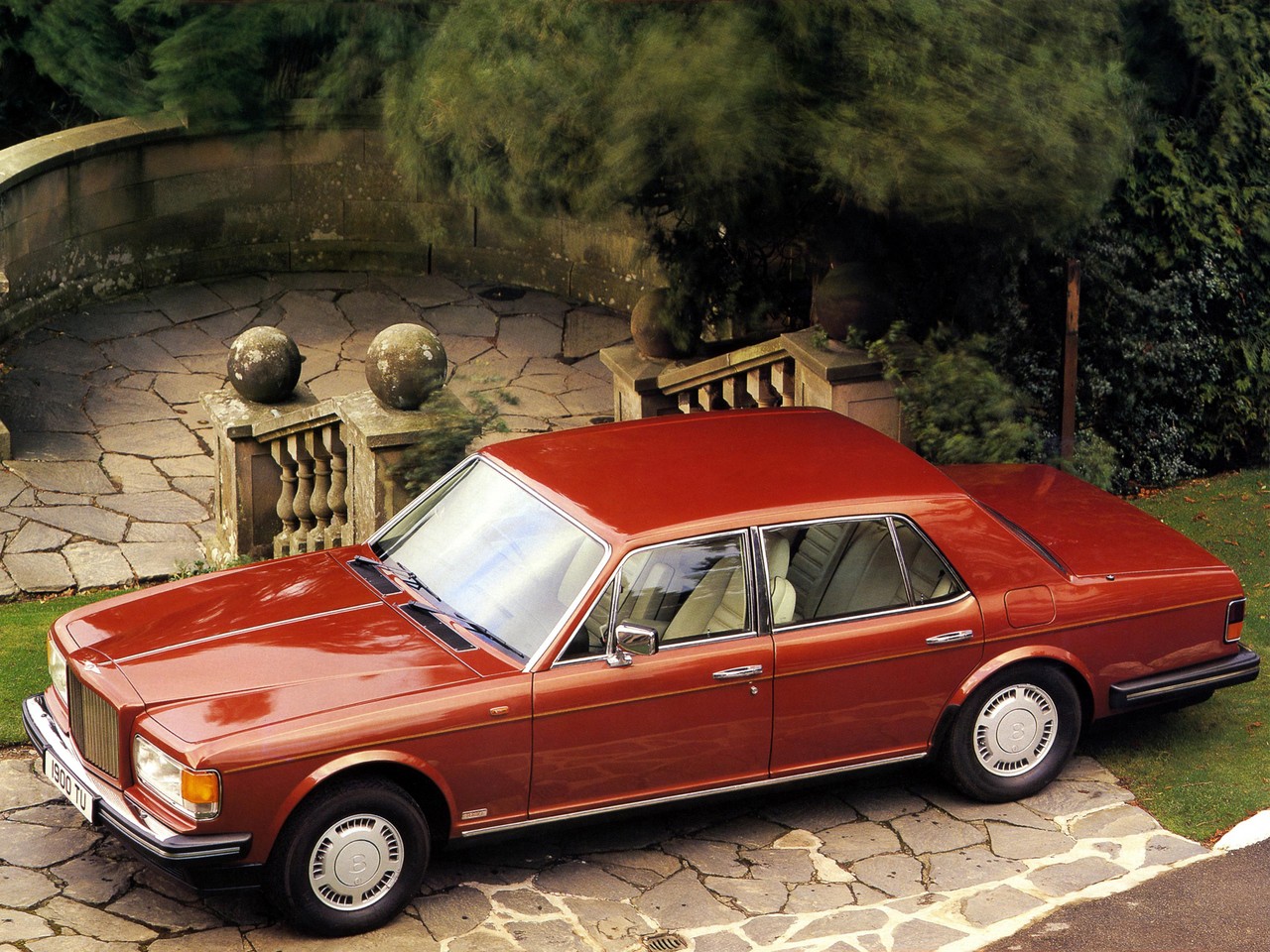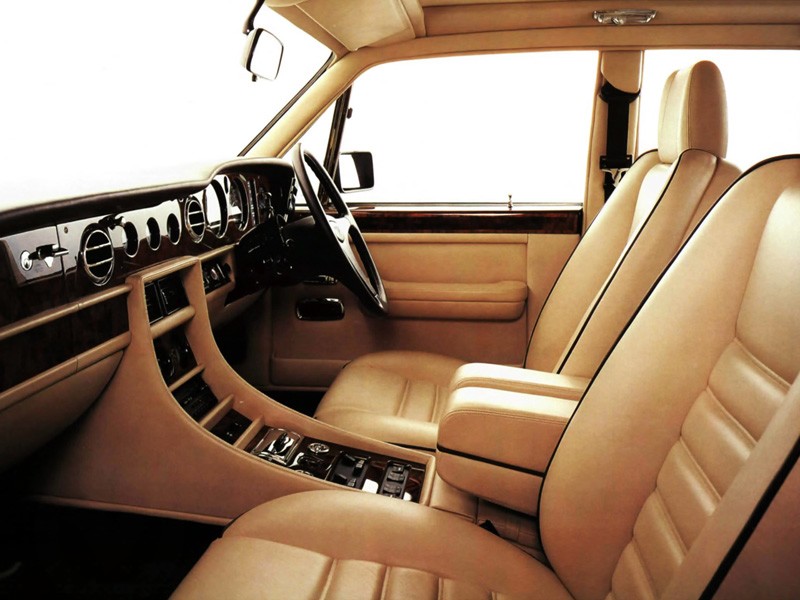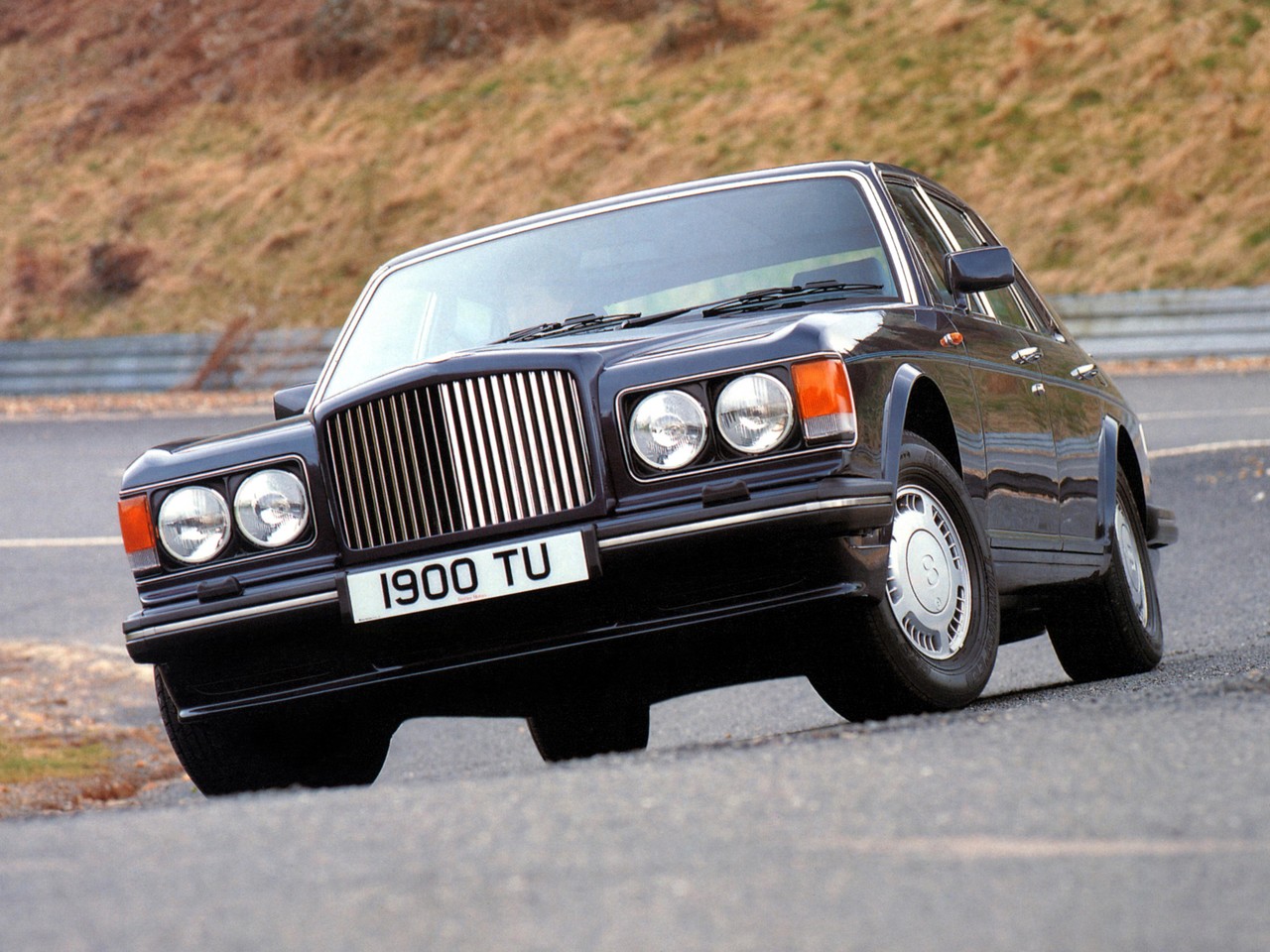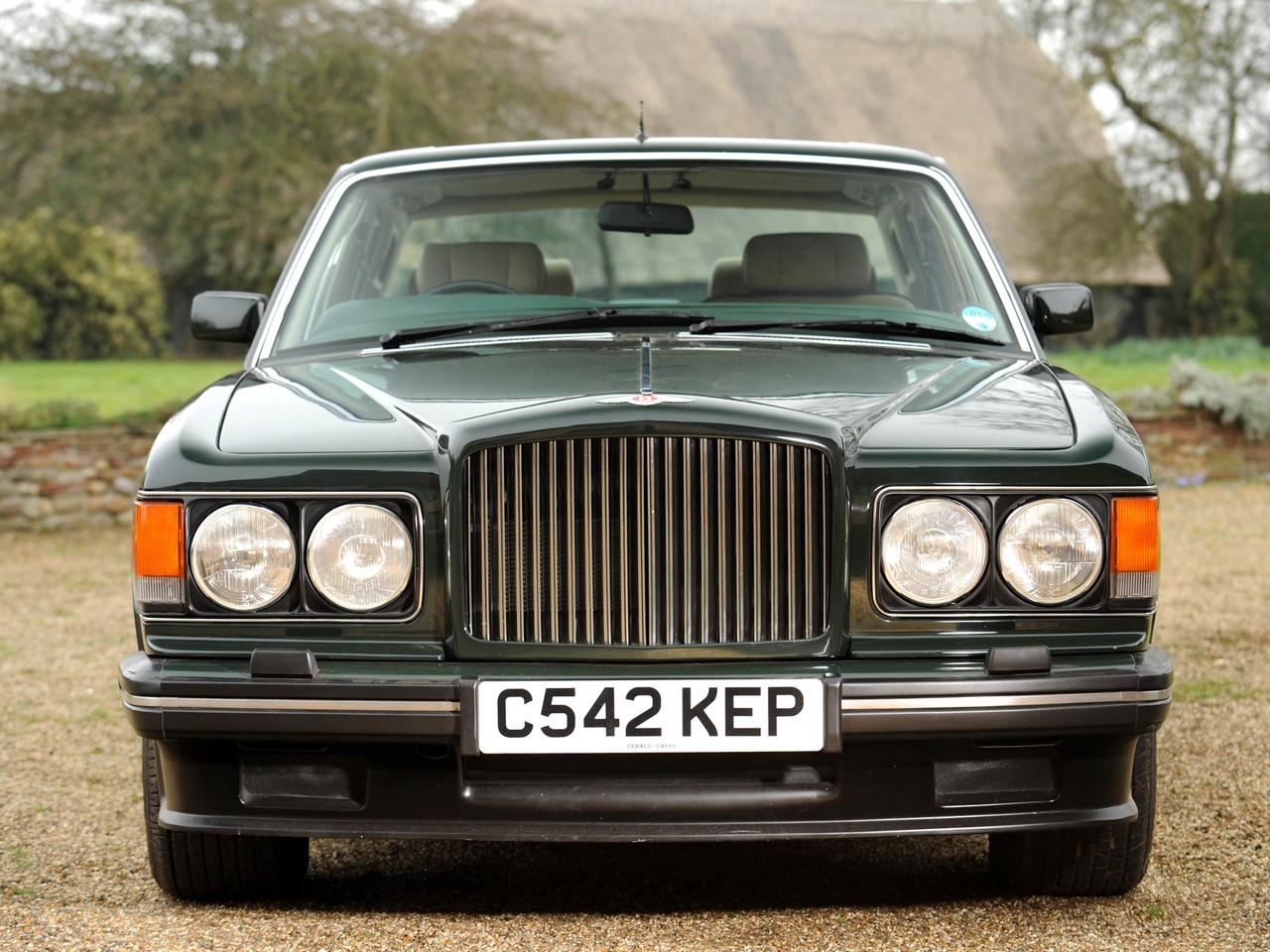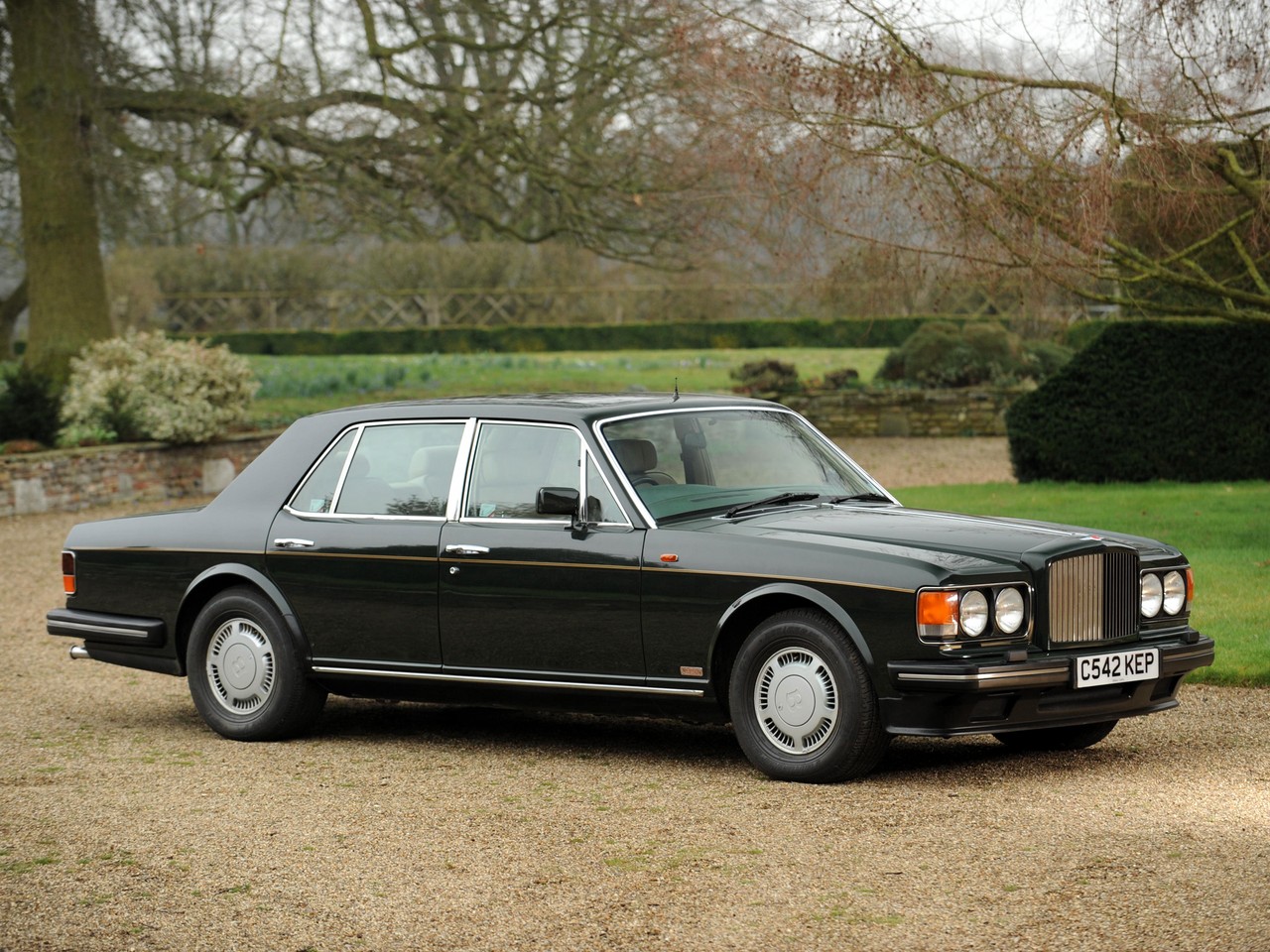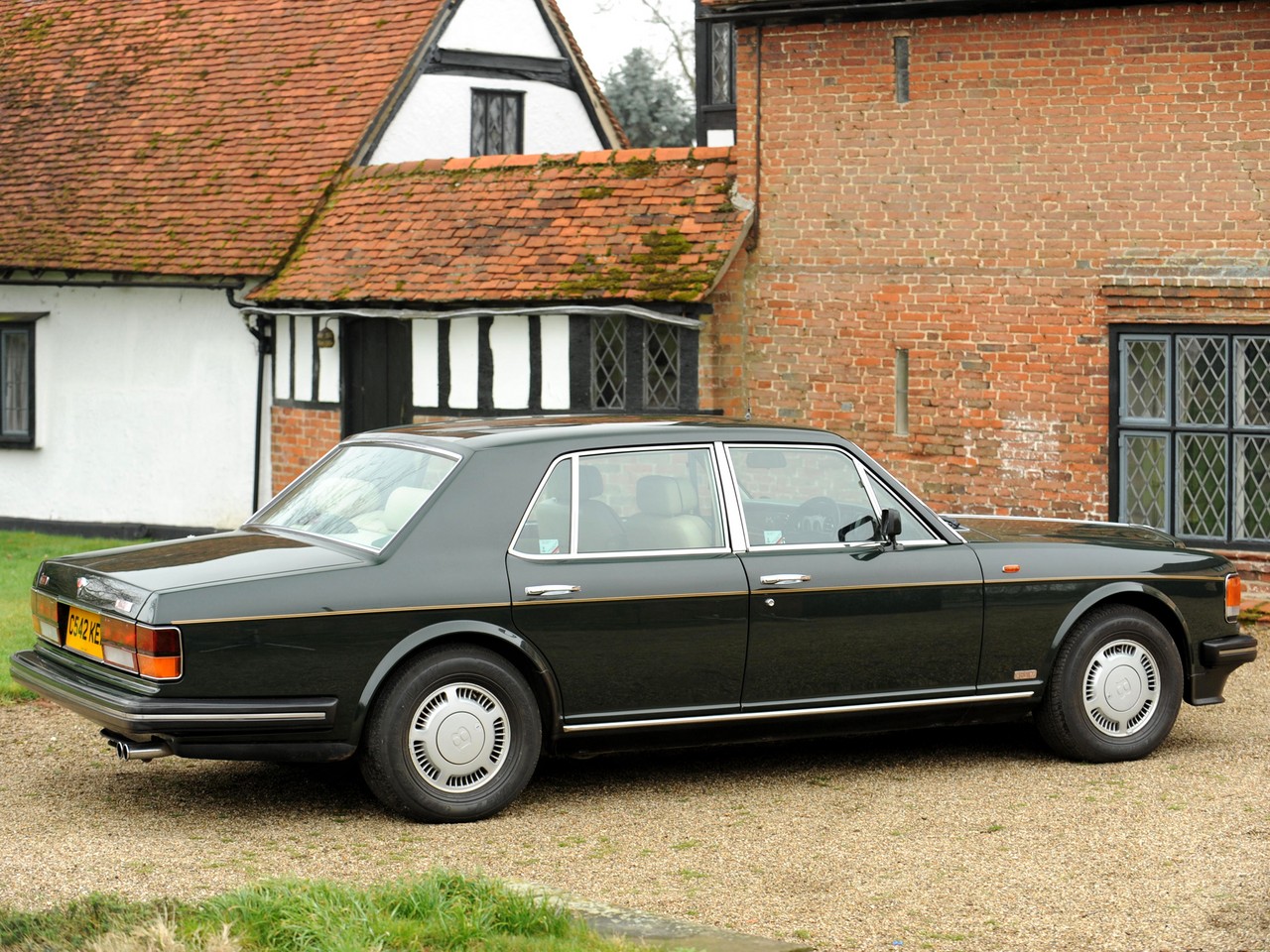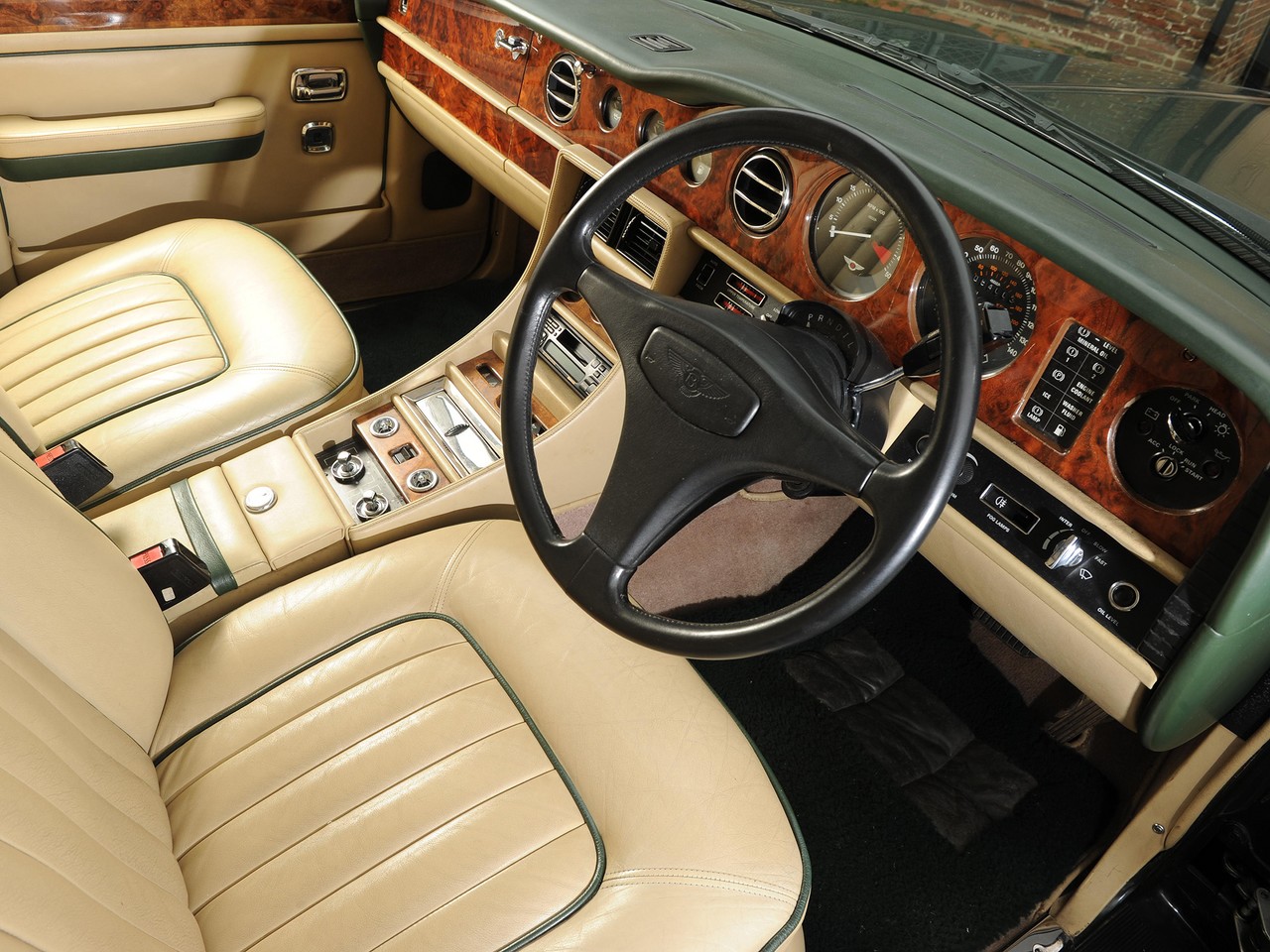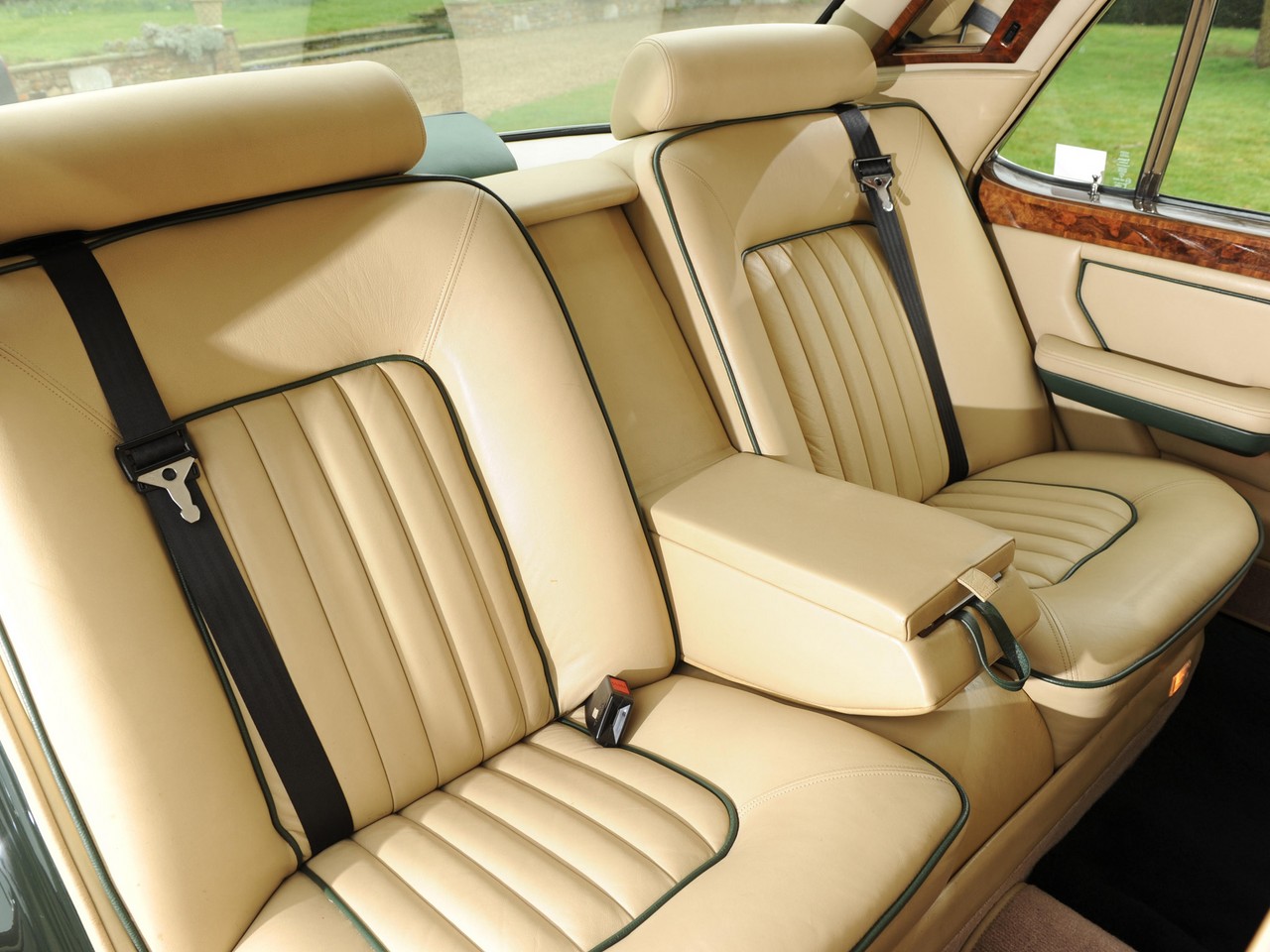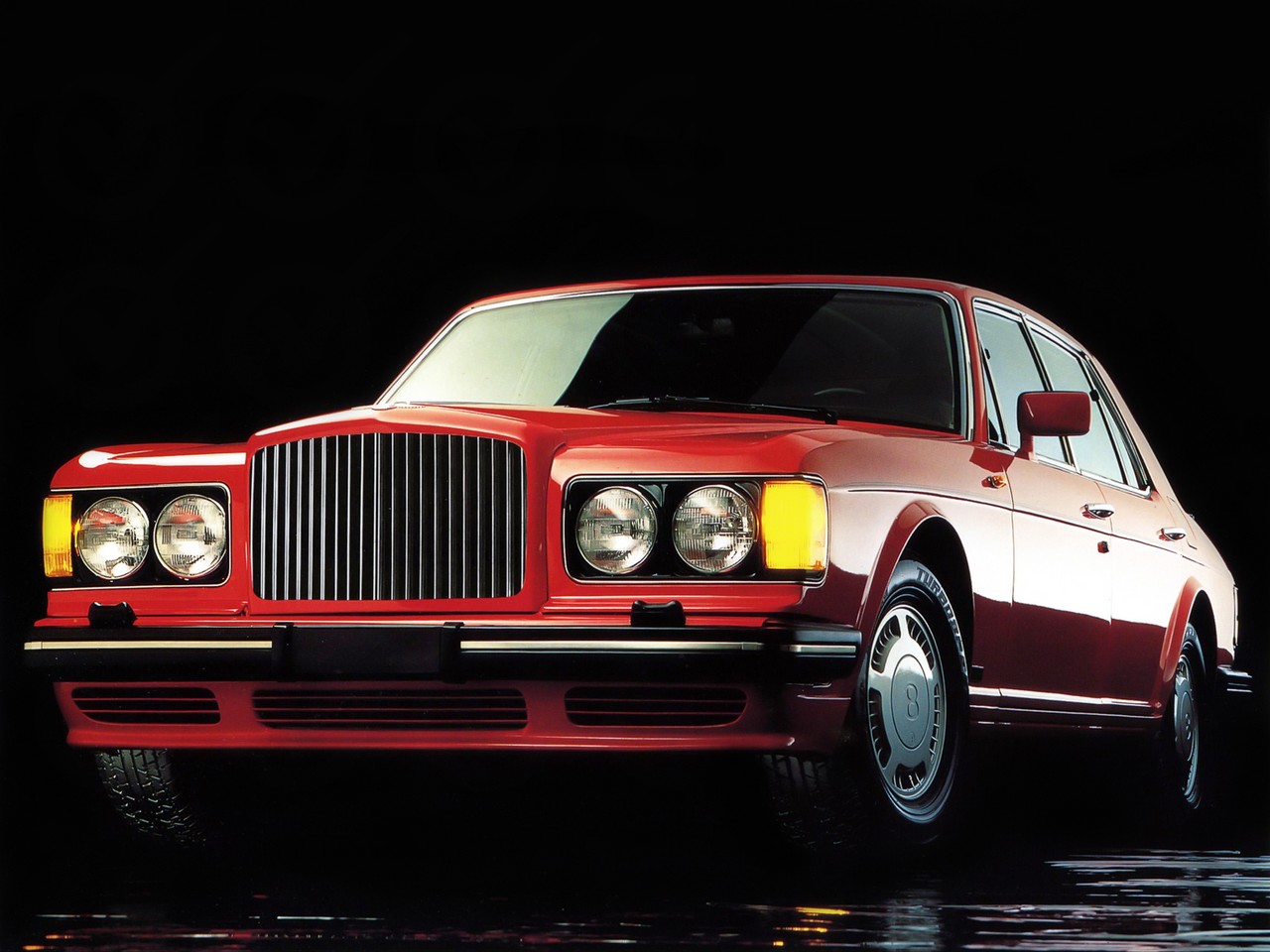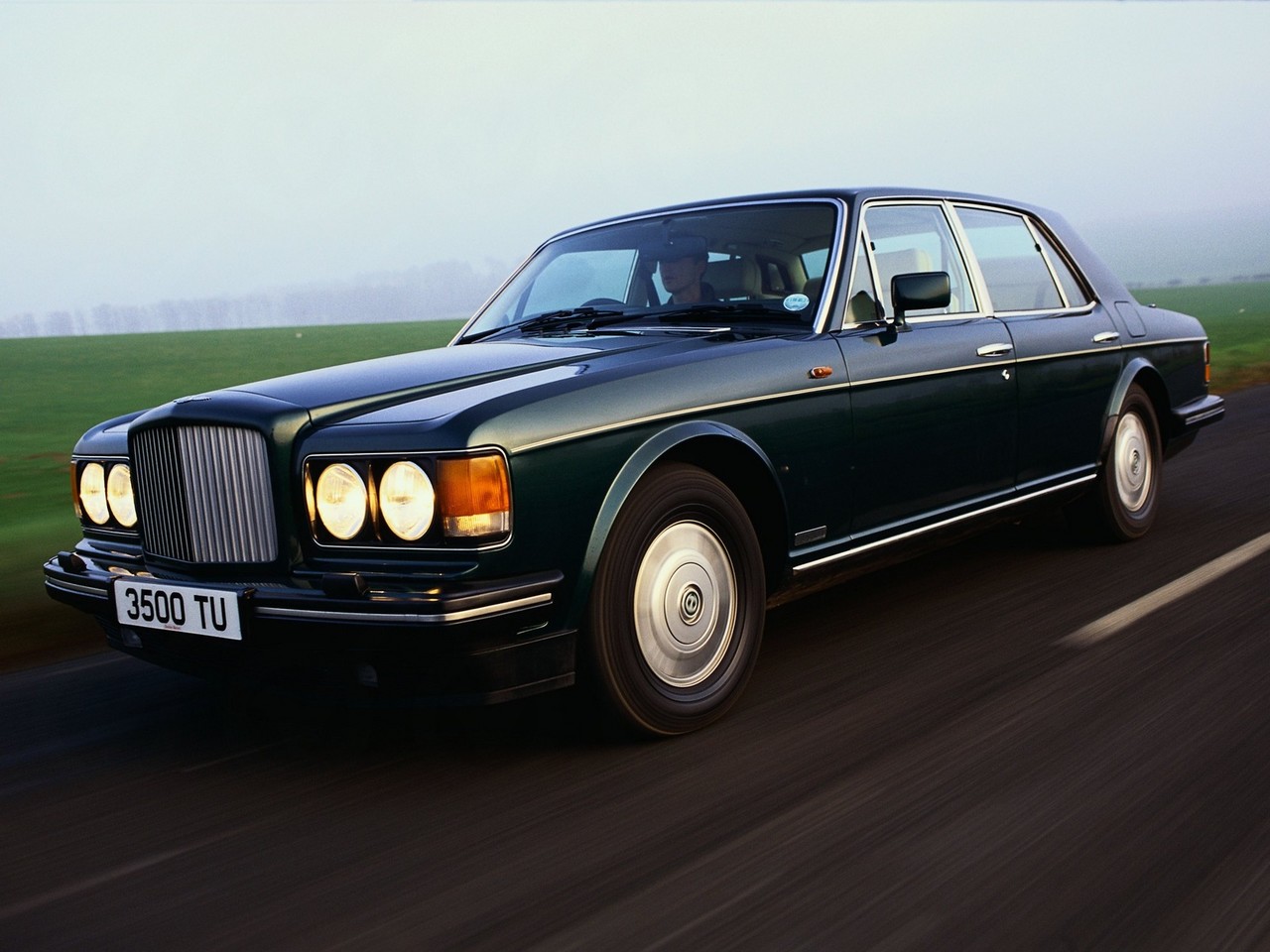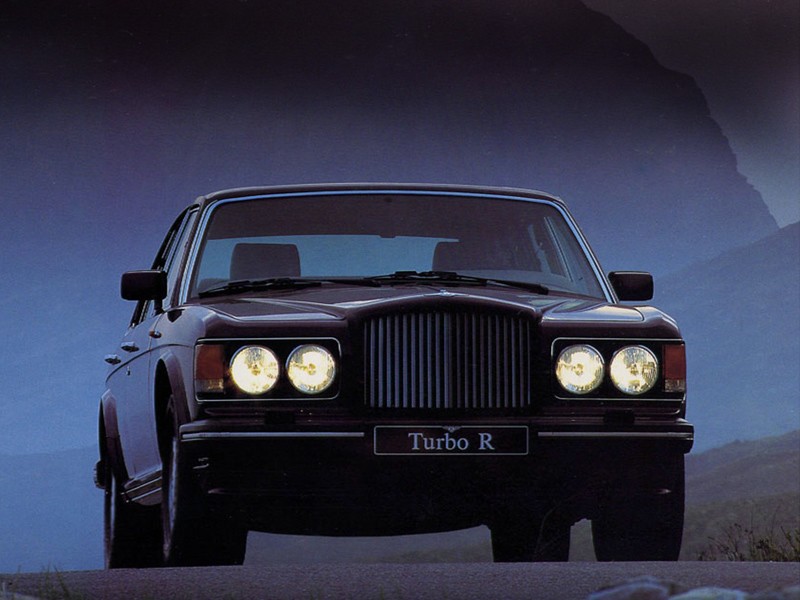
- Powerful 6.75-litre V8 engine
- Comfortable ride
- Sumptuous interior
- Well-insulated cabin
- Weight blunts agility
- Horrendous fuel efficiency
- High maintenance costs
Review: Bentley Turbo R (1985-94)
Overview
Released in 1985 and with Australian deliveries commencing in 1987, the Bentley Turbo R was a prestige saloon. Manufactured in Crewe, England, the rear-wheel drive Turbo R was powered by a 6.75-litre turbocharged V8 petrol engine. Although based on the Mulsanne, the Turbo R was differentiated by a sporting emphasis which included more powerful engines, larger alloy wheels, one-inch wider tyres and firmer suspension.
Engine
The 6.75-litre pushrod V8 engine had an aluminium-silicon alloy cylinder block, an aluminium alloy cylinder head, a single exhaust-driven Garett turbocharger and two valves per cylinder. While the engine initially had Solex four-barrel downdraught carburetors, these were replaced by Bosch MK-Motronic fuel injection in October 1986 (when a higher rear axle ratio was also introduced).
In 1989, a more reliable cross-bolted crankcase was introduced and power increased due to the introduction of an air-to-air intercooler (chassis #23936). The engine management system was revised in late 1993 and, in 1994, a transient boost control function was introduced for greater power in short bursts.
Transmission
The Turbo R was initially fitted with General Motors’ three-speed Turbo Hydramatic 400 automatic transmission. From 1992, however, the Turbo R had an electronically-controlled 4L80-E four-speed automatic transmission which was operated by a T-bar gearshift lever in the centre console (the three-speed transmission had a steering wheel-mounted gearshift stalk).
Dimensions
The standard wheelbase Turbo R was 5278 mm long, 2006 mm wide, 1485 mm tall and had a 3061 mm long wheelbase. The long wheelbase Turbo R – also known as the Turbo RL – was 100 mm longer (at 5378 mm) due to its 100 mm longer wheelbase (3161 mm).
Suspension
The Turbo R had independent front suspension with lower wishbones and independent rear suspension with semi-trailing arms. Compared to the Mulsanne, the Turbo R’s suspension achieved an increase in roll stiffness by 50 per cent through stiffer anti-roll bars (by 100 per cent at the front and 60 per cent in the rear) and a Panhard rod was introduced to anchor the rear suspension. The suspension initially featured a hydraulic Girling self-levelling ride control system for the rear suspension. In 1991, however, electronically-controlled dampers were introduced – front and rear – for greater body control.
| Engine | Trans. | Years | Peak power | Peak torque | |
|---|---|---|---|---|---|
| Turbo R | 6.75-litre turbo petrol V8 | 3sp auto | 1985-86 | N/A | N/A |
| 6.75-litre turbo petrol V8 (EFI) | 3sp auto | 1986-91 | N/A | N/A | |
| 6.75-litre turbo petrol V8 (EFI) | 4sp auto | 1992-96 | N/A | N/A | |
| Turbo RL | 6.75-litre turbo petrol V8 | 3sp auto | 1985-86 | N/A | N/A |
| 6.75-litre turbo petrol V8 (EFI) | 3sp auto | 1986-91 | N/A | N/A | |
| 6.75-litre turbo petrol V8 (EFI) | 4sp auto | 1992-96 | N/A | N/A |
Safety equipment
From October 1986, the Turbo R was fitted with ABS. In 1990, a driver’s airbag was introduced and a front passenger airbag was introduced in late 1993.
Features
Standard features for the Turbo R included 15-inch alloy wheels with 275/55 VR15 tyres, a sound system with a radio and cassette player, leather upholstery, air conditioning, cruise control, central locking, push-button start, power windows and power mirrors. In October 1986, slimmer front seats were introduced for greater rear leg room.
In mid-1987, the dashboard was revised with more modern instruments and the rectangular trip computer box was replaced by round gauges. From mid-1988, the Turbo R had twin round head lights and a larger front spoiler.
In 1990, standard features were extended to include heated front seats with adjustable lumbar support and one-touch front windows.
In 1993, a new Alpine sound system with ten speakers and a six-disc CD changer was introduced. Other changes included 16-inch alloy wheels with 255/65 VR16 tyres were introduced and the fitment of an automatically dimming rear view mirror.
Related links
Review: Bentley ‘New’ Turbo R (1995-97)
Overview
Released in 1995, the ‘New’ Turbo R introduced a more powerful engine due to the introduction of Zytec digital fuel injection and ignition; the final drive ratio was also increased for improved fuel economy.
Visually, the ‘New’ Turbo R could be identified by its body-coloured door mirrors (which were faired into the doors) and more aggressive ground effects. Furthermore, the spare tyre was moved from under the car to inside the boot.
Inside, a ‘Sport’ button was added to the gearshift lever to engage stiffer suspension settings and a more aggressive gearshift profile.
| Engine | Trans. | Years | Peak power | Peak torque | |
|---|---|---|---|---|---|
| Turbo R | 6.75-litre turbo petrol V8 | 4sp auto | 1995-97 | 286 kW at 4000 rpm | 750 Nm at 2000-3450 rpm |
| Turbo RL | 6.75-litre turbo petrol V8 | 4sp auto | 1995-97 | 286 kW at 4000 rpm | 750 Nm at 2000-3450 rpm |
Safety equipment
Standard safety equipment for the New Turbo R included dual front airbags and ABS.
Features
Standard features for the New Turbo R included 17-inch alloy wheels with Avon 255/55 ZR17 102W tyres, a ten speaker sound system with a CD player and six-disc CD stacker, leather upholstery, heated front seats, climate control air conditioning, cruise control, remote central locking, push-button start, power windows, power mirrors and a tilt-adjustable steering wheel.
Related links
